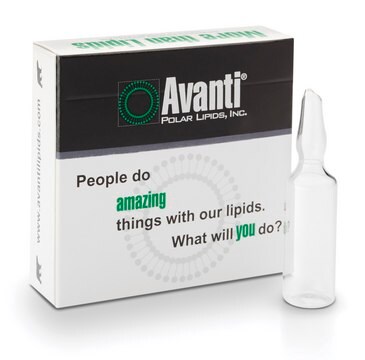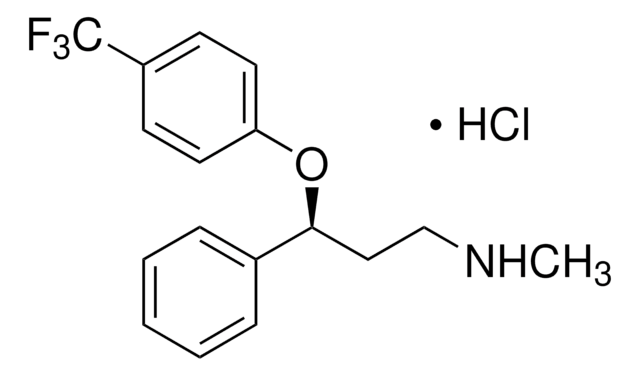870608H
Avanti
4-HNE-dimethylacetal
Avanti Research™ - A Croda Brand 870608H, hexane solution
Synonyme(s) :
(E)-4R-hydroxynonenal-dimethylacetal (Each vial contains 6.8mg which yields ~5.2mg 4-HNE after deprotection)
About This Item
Produits recommandés
Forme
hexane solution
Conditionnement
pkg of 1 × 1 mL (870608H-5mg)
Fabricant/nom de marque
Avanti Research™ - A Croda Brand 870608H
Concentration
6.8 mg/mL (870608H-5mg)
Type de lipide
phosphoglycerides
bioactive lipids
Conditions d'expédition
dry ice
Température de stockage
−20°C
Chaîne SMILES
CCCCC[C@@H](O)/C=C/C(OC)OC
Description générale
The dimethylacetal derivative is a more stable form of 4-HNE which is good for long term storage of the compound during use. It can be easily converted to 4-HNE in the presence of acid.
Conditionnement
Informations légales
Mention d'avertissement
Danger
Mentions de danger
Conseils de prudence
Classification des risques
Aquatic Chronic 2 - Asp. Tox. 1 - Flam. Liq. 2 - Repr. 2 - Skin Irrit. 2 - STOT RE 1 Inhalation - STOT SE 3
Organes cibles
Central nervous system, Nervous system
Code de la classe de stockage
3 - Flammable liquids
Classe de danger pour l'eau (WGK)
WGK 3
Point d'éclair (°F)
-14.8 °F - closed cup
Point d'éclair (°C)
-26.0 °C - closed cup
Faites votre choix parmi les versions les plus récentes :
Certificats d'analyse (COA)
Désolés, nous n'avons pas de COA pour ce produit disponible en ligne pour le moment.
Si vous avez besoin d'assistance, veuillez contacter Service Clients
Déjà en possession de ce produit ?
Retrouvez la documentation relative aux produits que vous avez récemment achetés dans la Bibliothèque de documents.
Les clients ont également consulté
Notre équipe de scientifiques dispose d'une expérience dans tous les secteurs de la recherche, notamment en sciences de la vie, science des matériaux, synthèse chimique, chromatographie, analyse et dans de nombreux autres domaines..
Contacter notre Service technique













